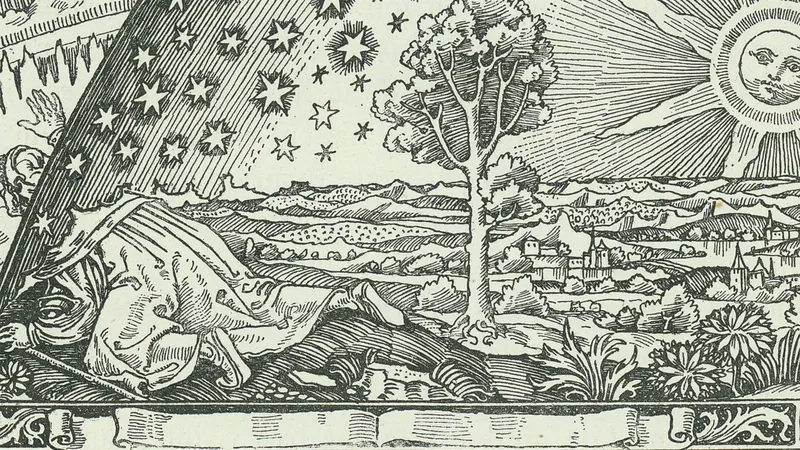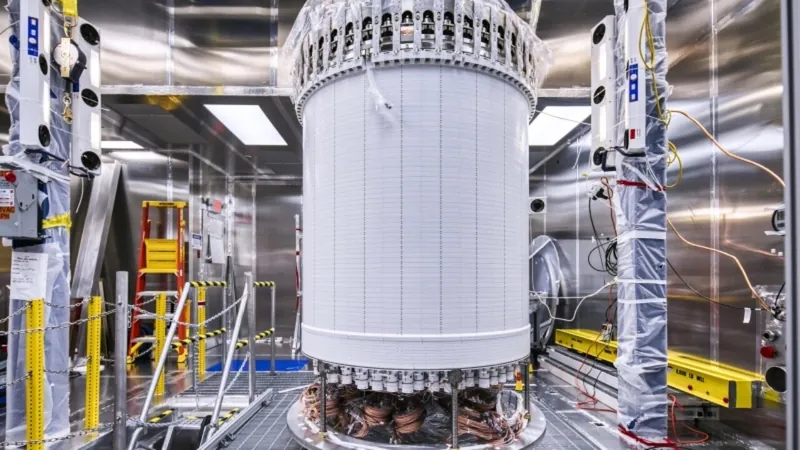
Unveiling Mars: The 19th-Century Visionary Who Blended Science and Fiction
2025-06-29
Author: John Tan
Mars: From Mystery to Possibility
In an era where robotic missions to Mars are becoming a reality and human exploration is on the horizon, it's fascinating to reflect on a time when the red planet was merely a mysterious speck in the night sky. Before rockets were a glimmer in engineers' eyes, early astronomers used their imaginations to explore what lay beyond their telescopes.
The Advent of Imagination and Discovery
The late 19th century was a pivotal time for mapping Mars. As astronomers gained access to more powerful telescopes and advanced printing techniques, they began crafting the first detailed maps of the planet's surface. Although these maps were filled with continents and seas—sometimes even features that hinted at life—they differed widely due to the limitations of observation.
Meet Camille Flammarion: A Bridge Between Science and Fiction
One of the leading figures of this creative exploration was Camille Flammarion, a Parisian astronomer who, in 1892, published "The Planet Mars". This seminal work compiled centuries of observations since Galileo's time, drawing from 572 illustrations. Flammarion not only popularized Mars but also championed the idea that it might host a unique form of life, shaped by its distinct conditions.
The Search for Life on a Distant World
While Flammarion acknowledged the limitations of contemporary technology—"the distance is too great, our atmosphere is too dense"—he cleverly speculated on what life could resemble there. He argued that if intelligent life existed, it would likely be older and more advanced than humanity.
The Intriguing Unknown
Flammarion was fascinated by the mysteries that remained, emphasizing that 'the Known is a tiny island in the midst of the ocean of the Unknown.' While historians often view him as more of a popularizer than a hardcore scientist, his vision was groundbreaking. To him, science was less about established knowledge and more about an emerging philosophy aimed at elevating human thought.
Visions of Martians: Flammarion's Literary Journey
Flammarion's imaginative explorations extended beyond scientific analysis into a series of novels. Unlike contemporaries like Jules Verne, who depicted mechanical journeys to the Moon, Flammarion's tales involved spiritual travel through the cosmos. In his 1889 novel "Urania," a dream journey allows him to meet a reincarnated friend now residing on Mars.
A Vision of Martian Utopia
In these stories, Flammarion imagined Martians living in a harmonious society, free from the struggles of war and famine—a wish influenced by his experiences during the Franco-Prussian War. He envisioned an advanced civilization rich in scientific understanding, capable of soaring higher in knowledge compared to Earthlings.
Lessons from Mars for Humanity
Today, Flammarion's vision serves as a poignant reminder that our aspirations for a future on Mars are tied to understanding our own humanity. His popularization of science was aimed at helping Earth dwellers recognize their potential place in the universe—a future where we might unite with those imaginative Martians he crafted, reflecting a world that humanity could aspire to under the right conditions.


 Brasil (PT)
Brasil (PT)
 Canada (EN)
Canada (EN)
 Chile (ES)
Chile (ES)
 Česko (CS)
Česko (CS)
 대한민국 (KO)
대한민국 (KO)
 España (ES)
España (ES)
 France (FR)
France (FR)
 Hong Kong (EN)
Hong Kong (EN)
 Italia (IT)
Italia (IT)
 日本 (JA)
日本 (JA)
 Magyarország (HU)
Magyarország (HU)
 Norge (NO)
Norge (NO)
 Polska (PL)
Polska (PL)
 Schweiz (DE)
Schweiz (DE)
 Singapore (EN)
Singapore (EN)
 Sverige (SV)
Sverige (SV)
 Suomi (FI)
Suomi (FI)
 Türkiye (TR)
Türkiye (TR)
 الإمارات العربية المتحدة (AR)
الإمارات العربية المتحدة (AR)